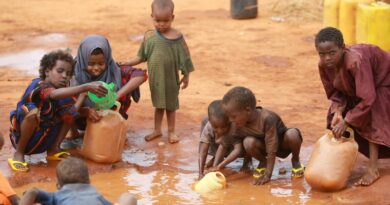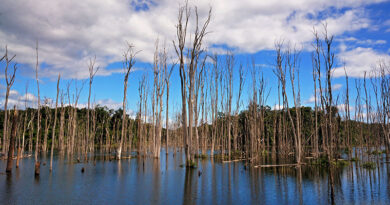Worlds’ land, water resources at ‘breaking point’, food security threatened, warns FAO

The world’s current agricultural practices are neither sustainable nor appropriate for today’s farming challenges, a new report by the Food and Agriculture Organization (FAO) has warned.
Stating that any advance in transforming food systems to meet future demand will require a focus on land resource planning in which systemic analyses of land, soils and water are combined with poverty and food security monitoring, the United Nations agency said that technological advances are necessary to alleviate pressures stemming from climate change and to be able to provide food for a growing global population that is estimated to increase by two billion by 2050.
FAO’s recently published SOLAW 2021 report (State of the world’s land and water resources for food and agriculture) aims to provide global, national and regional decision makers with, “solutions away from the business-as-usual approach, injecting a sense of urgency in making the necessary transformation at the roots of the global food systems.”
The report states that if farming practices fail to become more sustainable, water withdrawals required for agriculture will have to increase by 35 per cent to cater for the world’s growing population in the coming years. Failure to adapt could create potential catastrophes including conflict over food and water and environmental disasters.
The report also cautioned that growth in irrigation techniques and pesticide use are negatively impacting soil and water supplies, concluding that degradation of resources have forced food systems to reach a “breaking point.”
Use of irrigation is popular as it can produce up to three times the number of crops than rain fed systems. However, chemicals use contaminates groundwater and soil. The UN estimates that irrigation is responsible for 72 per cent of groundwater withdrawals.
Groundwater withdrawals for irrigation have increased from approximately 688 km3/year in 2010 to 820 km3/year in 2018, a 19 per cent increase. “Groundwater use is already constrained. It is intensively exploited in most principal continental aquifers and along highly productive coastal plains, where saline intrusion is a constant threat. Irrigated areas under stress correlate strongly with intensive groundwater use and depleting aquifers.”
“Modelling the impact on irrigated crop production indicates that groundwater depletion will continue to place severe constraints in East Asia, the Middle East–Western Asia, Northern America and South Asia”, it noted.
According to the report explained, polluted water supplies adversely affect health and economic development stating, “agriculture has become the dominant source of pollution in many countries. Degrading water quality is a significant threat to food safety and food security.”
Use of “reactive nitrogen synthetic fertilizer” has increased from 81-110 million tonnes between 2000 and 2017, resulting in degradation of soil. Another area of concern is pollution deriving from pesticides and livestock pharmaceuticals with the report indicating, “there is currently little regulation or monitoring.”
The report offered four solutions that will help feed a growing population in the next 30 years as well as reduce green house emissions in agriculture, stating that no “one size fits all” solution exists, but a “full package” of workable solutions is available. These will succeed only when there is a conducive enabling environment, strong political will, and inclusive governance of land and water.
Any advance in transforming food systems to meet future demand will require a focus on land resource planning in which systemic analyses of land, soils and water are combined with poverty and food security monitoring. The tools for planning and management are available. Data collection and information dissemination need to improve. Monitoring the effects of climate change in relation to agroecological suitability will prove essential for planning resource use along the entire food value and supply chains, said the report.
Implementation of plans through integrated multisectoral approaches need not be complex. Such approaches can be intuitive and may require only close collaboration across sectoral boundaries. However, farmers and resources managers need to be much more risk aware and work together with planners in setting their responses and contingency planning.
The level of support provided to agriculture will need to be redirected to bring about desired gains in the long-term stability of agriculture’s natural resources base and the livelihoods of those who depend upon them. Planning a way out of the downward spiral of land degradation and water scarcity offers promise when combined with forward-looking incentives for climate adaptation and mitigation. There is now scope for progressive multiphased financing of agricultural projects that can be linked with redirected subsidies to keep land and water systems in play.



